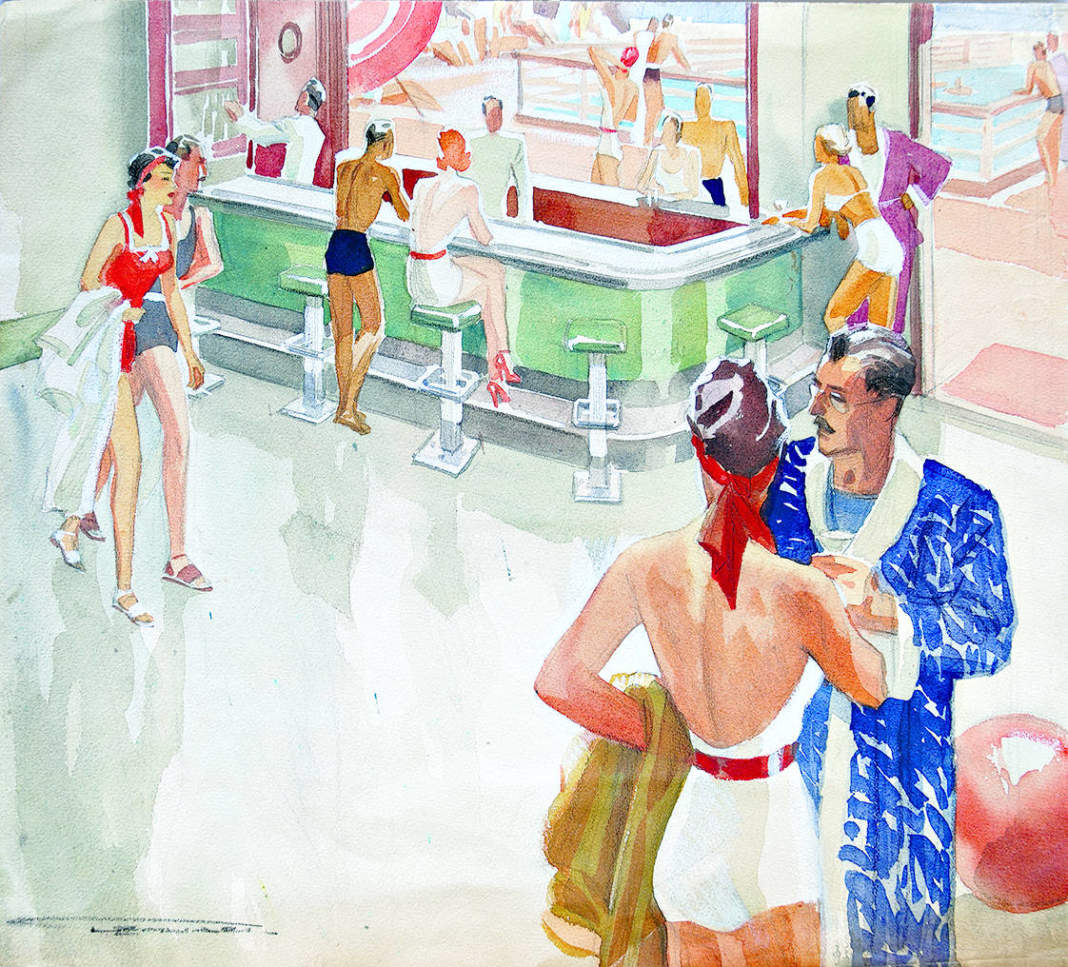The primitive act of settlement which culturally defines the relationship between humankind and nature is historically represented by two archetypes: the cave and the tent (the hut). As O.M. Ungers writes, “architecture has two fundamental typologies: the cave and the hut. The former symbolizes the lasting, the constant; it is persistent and tied to a place. The latter is mobile, it has something temporary and ephemeral, and may change place continuously. Stability takes form in the cave; mobility takes form in the hut.“
While the evolution of these two models is evident – on the one side the architecture of mass, solidity and permanence and on the other that of transparency, lightness and temporariness – the principles of living associated with them are not equally direct. In fact, the more “stable and “durable” – and thus defined and unchangeable in its physical expression – an architecture is, the more its contents linked to the function and very meaning of the space risk, in case of losses or changes of values, not to correspond to the built structure with the passing of time; on the contrary, the more ‘flexible’, ‘unstable’ and thus modifiable the container delimiting the physical space is, the more are the settlement principles and lifestyles catered to and confirmed, precisely thanks to the adaptability of the shell that defines them. In spite of the apparent fragility and misunderstood feebleness of ‘significance’ of the ‘tent’ as an archetype, it actually conceals a convincing settlement logic based on strong and lasting values and contents, that do not require any change or transformation of the natural context, but rather seek to establish a relationship of symbiosis and exchange with it. This “light settlement” which avoids to alter nature, but conserves and hands down to posterity clear and well-defined cultural modes of living, measures swords with mobility, with the absence of roots and ties to a certain place. Atopia, which is not a principle contemplated by the archetype of the cave, may on the contrary be pursued with the unstable model of the tent, with a lifestyle capable of interpreting the relationship between man and nature in dynamic terms. Nomadism, but also simple travelling, makes it necessary to get beyond the very concept of “home”, introducing the idea of space as a means by which to live nature fully. Just a few objects and ancient consolidated rites make it possible to turn “any place” into “one’s own place” in which to stay and thus to appropriate – discreetly and for a short while - when it is necessary.
Interior design of means of transport, when they become a part of the life of Man, pursue their specific character, namely that of spaces with few functions, used for short periods of time, but they do so on the basis of housing and distribution models inspired by domestic places, thus referring to stable solutions for solutions that are anything but stable. Living “in movement” does not require a circumscribed place, it does not need a static space; it creates a feeling of intimacy and comfort from conditions and relations capable of adapting themselves to any place.
If the interiors of ships, trains and airplanes were to abandon the typical morphologies of the house/cavern, this might give rise to new solutions suited to a limited use of time and dimensions and to flexible and compact spaces, made from new materials and with new functions. Environments that therefore have nothing to do with the behaviours and rituals of the domestic tradition, oriented towards a direct correspondence between form and function, between image and content, between individual and object, in the name of new “lifestyles”.To ‘domesticate’ a moving place means to adapt the dimensions of the spaces and structures directly to Man, preparing a truly ‘tailor-made’, comfortable and functional garment, overcoming consolidated formal arrangements and meeting the expectations and requirements of new behaviours based on clearly defined rhythms and measures.
The duration of the time spent in a travelling vehicle, and its dimension, naturally suggests a reduced inhabitability and a limited and essential degree of socializing.
Speaking of places in which to live on the move therefore means to abandon the cultural model characteristic of the ‘cave’ and extend and amplify that of the ‘tent’ beyond the very borders of architecture, where the ‘shelter’ is not only something that ‘protects’ but rather that certain space in which it is possible to rediscover, impressed and legible, the traces of one’s activities, physical and psychological, that are capable of a cultural interpretation of the relationship with nature.
The myth of the journey, the idea of belonging to a place that is not defined and circumscribed, corresponds to a way of living that goes beyond the house, which does not imitate it but is capable of evoking it through the gestures, objects and memories that substantiate it.
Wherever I lay my hat (that's my home) as Marvin Gaye sang in 1962, to underscore a feeling of belonging and relationships made solely of behaviours and ways to be; to ‘make oneself at home’, rather than ‘being at home’.Minimal spaces for living, as those characteristic of the yachting world, therefore call for an interior design that is not based on the forms or recognisability of living spaces, but above all on the web of relations and behaviours, sensations of a domestic kind, rather than a recreation of characters borrowed from other conditions of living capable of suggesting instruments to really make humans relate to their habitat. The experience of nature, of the sea, of speed, of travelling, of learning new things, must be read through clearly defined dwelling models that differ from those of the architectural tradition, disregarding the suggestions of fashionable designs and responding to the innermost and deepest requirements of those who wish to experience those emotions.







